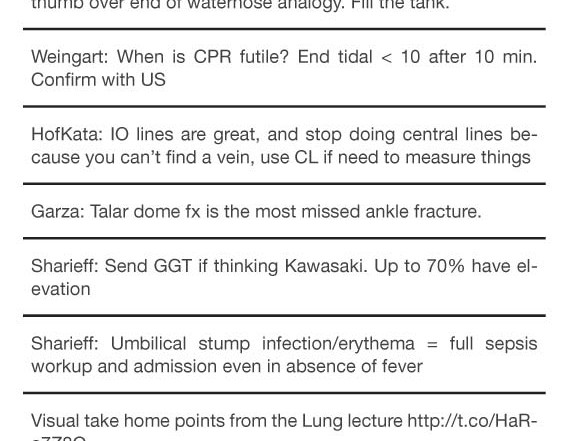There is an age old problem in medicine. How can any physician keep up with the deluge – the absolute avalanche – of literature and information coming out each month? There are all of the obvious avenues for eduction, but there is one method that has often gone underappreciated: hanging out at the proverbial watercooler.
The web’s favorite micro-blogging platform has now proven to be a robust way to keep up with EM literature
There is an age old problem in medicine. How can any physician keep up with the deluge – the absolute avalanche – of literature and information coming out each month? There are all of the obvious avenues for eduction, but there is one method that has often gone underappreciated: hanging out at the proverbial watercooler. During impromptu chats in the department office or hospital cafeteria, physicians often learn and are motivated to independently and more deeply research the issues of the day. Discussion items might include what medication you would have given for a particular patient, or what the best test might be for diagnosing septic arthritis.
One topic that has continued to generate a lot of buzz is the recent American College of Emergency Physicians (ACEP) Scientific Assembly. Although I was unable to attend the meeting this year, I followed along and learned many of the key points highlighted by the great speakers. How? By hanging out around the new digital watercooler – Twitter.
By searching the Twitter discussion marked by the hashtag #ACEP12, I was able to follow the conference discussion in real time. Over 3,500 tweets were made at ACEP over the four-day conference. To give you an idea of the quality of content, here are some teaching pearls I learned:

The first time that I truly realized the potential value of Twitter in teaching and learning, however, occurred several months previously when I was involved in a spontaneous discussion spanning a period of less than three hours and involving people worldwide. The discussion focused on a novel approach in placing a chest tube in a morbidly obese patient. Be aware that because of the 140 character limit in Twitter, an abbreviated style of writing is necessary. For instance, “RT” means retweet and the “@” symbol denotes a person’s Twitter name.
Below is what transpired:
Time Person Location Tweet
7:41 am @Mdaware New York New bougie use! Bougie assisted chest tube in the obese (from my bro in law, works with @emlitofnote)
8:10 am @EMCrit New York Bougie seems too short to allow seldinger, no?
8:21 am @EmLitOfNote Texas They do make bougies up to 70 cm – clearly longer than a thoracostomy tube. Interesting idea…
8:26 am @EMCrit New York Whoever is in the dept today, shoot a pic of bougie inside tube…
8:55 am @Hqmeded Minnesota Bougie inside 32F chest tube pic.twitter.com/JVghl13w
8:58 am @M_Lin California Who should I credit with idea? RT @hqmeded: @emcrit @emlitofnote @precordialthump @MD aware Bougie inside 32F chest tube
8:59 am @precordialthump Australia @M_Lin @hqmeded @emlitofnote @Mdaware The twitter mind meld as @emcrit would say
10:08 am @GrahamWalker California @hqmeded @emcrit @emlitofnote @precordialthump @Mdaware Sorry @M_Lin I just HAD to trump you (Sim lab today) http://cl.ly/3r2T0V2c0v2x3q370E1Z/o

These are only two of many examples of the power and potential of Twitter in medical education. It is free, openly accessible to those who want to learn, and available worldwide. Consequently, when learners and educators tell me that Twitter is a waste of time, I tell them that actually the opposite is true. It is an incredibly efficient and effective use of my time. By following a core group of high-impact people, I have found that Twitter is essentially the 21st century, global watercooler in medicine. This digital meeting place allows you to learn directly – almost in real-time – from master clinicians and educators worldwide. I encourage you to join the conversation!



